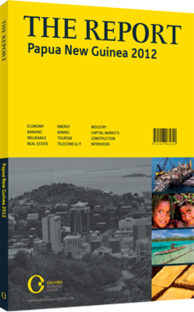Oil Search: Hydrocarbons
THE COMPANY: Oil Search (OSH) was incorporated in Papua New Guinea in 1929. It is PNG’s largest hydrocarbons producer and operates all of the country’s currently producing oil and gas fields.
OSH has a 29% interest in the PNG liquefied natural gas (LNG) project operated by ExxonMobil, which commenced full construction in March 2010. The first LNG sales are scheduled for 2014. At the end of 2011 OSH had 2P reserves of 553m barrels of oil equivalent, including 505m barrels of oil equivalent relating to the PNG LNG project, and contingent 2C resources of 318m barrels of oil equivalent.
OSH is publicly listed on both the Australian Stock Exchange and the Port Moresby Stock Exchange. Additionally, it trades in the US through the American depositary receipt market. The company has a market capitalisation of $8.5bn. The state of PNG is the company’s largest shareholder, with a 15% interest. The state has issued exchangeable bonds over its holding to International Petroleum Investment Company of Abu Dhabi, stemming from a loan agreement between the two parties.
OSH has over 1000 full-time staff and more than 1200 contractors working for its operations in PNG, Australia, Yemen, the UAE and Tunisia.
The company reported 2011 full-year net profit after tax, including significant items, of $202.5m. An impairment charge of $33.2m relating to the Shakal block in Iraq resulted from the non-renewal of its licence. Higher crude prices and increased oil production were at the upper end of 2011 guidance. A final dividend of $0.02 was declared, taking the fullyear dividend to $0.04 for 2011.
Total revenue in 2011 of $732.9m was up 25% on 2010, reflecting increased production and higher crude prices. Production of 6.69m barrels of oil equivalent stemmed from strong performances from its mature oilfields and the timely completion of the shutdown of the central processing facility. The average Tapis crude price in 2011 was $116 per barrel.
Operating costs rose 18.9% to $101.9m in 2011.
Corporate costs were up 59% to $23.1m, in part due to inflationary pressures in PNG and the appreciation of the kina against the US and Australian dollars. Exploration expenditure in 2011 fell to $60.6m from $125m in 2010, due to successful drilling and lower evaluation rates.
At the end of December OSH had cash reserves of $1.048bn (including its share of joint venture balances) and an undrawn revolving oil facility of $246m, taking total liquidity to $1.294bn. The net debt position at the end of 2011, including PNG LNG project finance drawdown, was $700.1m.
DEVELOPMENT STRATEGY: OSH expects production for 2012 to be 6.2m-6.7m barrels of oil equivalent, which is similar to production in 2011.
The company expects two discoveries made in 2011 (Hedinia 10 and IDT 25) to offset much of the natural decline in its mature fields. Guidance is also influenced by a three-week shutdown of the central processing facility in the first quarter of 2012 and two further shutdowns of the facility in the second and fourth quarters of 2012. Production for 2013 is forecast at 2012 levels, assuming planned drilling in the year is successful.
OSH embarked on a major drilling programme in the final quarter of 2011 that is expected to continue for the next 18 months, with the aim of aggregating sufficient gas to de-risk a third LNG train.
Successful drilling of the P’nyang structure, which at present contains 1.5trn cu feet of gas, will be the catalyst for further development.
The PNG LNG project operator – Esso Highlands, a subsidiary of ExxonMobil – has recently given assurances that the project will make its first shipment in 2014. Total capital expenditure on the project is forecast to reach approximately $15.7bn, due to the impact of high domestic inflation and currency fluctuations. The PNG LNG project is now two years into its four-year construction schedule.
You have reached the limit of premium articles you can view for free.
Choose from the options below to purchase print or digital editions of our Reports. You can also purchase a website subscription giving you unlimited access to all of our Reports online for 12 months.
If you have already purchased this Report or have a website subscription, please login to continue.

